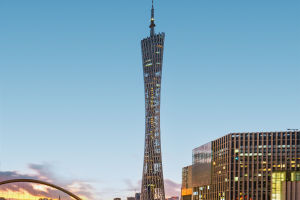Yangpu Bridge, located in the downtown Shanghai area, stands as a testament to engineering excellence. It serves as a sister bridge to Nanpu Bridge, completed just two years earlier.
Both were constructed to address the growing traffic over the Huangpu River in the heart of the city. Yangpu Bridge officially opened to traffic in October 1993 and remains a source of immense engineering pride for China.
Dear Lykkers, its longest span of 602 meters makes it one of the longest cable-stayed suspension bridges in the world.
The Impressive Specifications of Yangpu Bridge
Traffic Capacity
Yangpu Bridge is Shanghai's busiest, handling over 5000 vehicles per hour during peak traffic. It connects the Pudong district in the east with the Puxi district in the west, ensuring seamless transportation across the Huangpu River.
Expansion and Contraction
Modern suspension bridges, including Yangpu Bridge, are designed to adapt to temperature variations. Its center section rises by about 10 centimeters, and the bridge stretches by approximately 6 centimeters during intense midday heat.
Dimensions
The bridge spans 1172 meters across the river, but its total length, including end abutments, reaches 7654 meters. It features a 3-lane highway in each direction, a clearance height of 48 meters, and a width of over 30 meters, allowing ample space for vehicles and ships.
Architectural Elegance and Unique Features
Design and Structure
The two main pylons of Yangpu Bridge are designed in an inverted Y-shape, suspending supporting cables that combine efficiency with elegance. This distinctive design contributes to the bridge's graceful appearance.
Historical Significance
The bridge’s name, handwritten by former Chinese leader Deng Xiaoping, is etched on plaques on its two pylons, adding historical and cultural value.
Color and Walkways
Initially unpainted, the bridge was coated in vibrant red as part of the Millennium celebrations in 2000. Walkways on either side, measuring 2 meters wide, allow pedestrians and tourists to enjoy scenic views of the bridge and its surroundings.
Location and Accessibility
Position
Yangpu Bridge spans the Huangpu River, connecting "Pudong" (east of the Huangpu River) with "Puxi" (west of the Huangpu River). It is easily identifiable on city maps or during river crossings near the downtown area.
Transportation Options
From Puxi: Accessible via buses 8, 28, 135, 228, 401, 940, 538, 813, and 853.
From Pudong: Buses 13, 19, 71, 76, 81, 91, 94, 97, 130, 613, 618, 81, 85219, 522, 570, 573, 606, 608, 610, 626, 639, and 774.
By Metro: Chuanxie Line and Tunnel Line 6.
Crossing Costs
A toll fee of 5 Yuan is required to cross the bridge.
Yangpu Bridge is not only a vital infrastructure element but also a symbol of Shanghai’s modernization. Its remarkable design, functionality, and historical significance make it a must-see for engineering enthusiasts and tourists alike.


